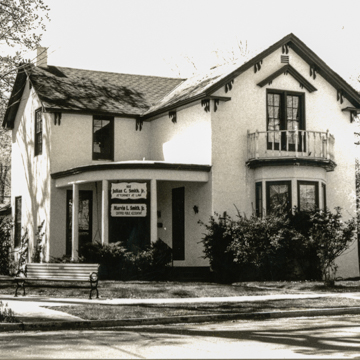Best known as the residence of the brother of Samuel Langhorne Clemens (Mark Twain), this house is an excellent example of early residential architecture in Carson City. The L-shaped structure has a gable roof with cornice returns lined with dentils, characteristic of the Greek Revival, whereas the brackets under the eaves and gables reflect the Italianate style. The wood-frame building originally stood on a foundation of timber posts driven into the earth. Like many other buildings in this part of the historic district, located close to state and local government buildings, the Clemens House now functions as a law office. The house has undergone many alterations over the years, including the application of stucco over the original dropsided walls and the substitution of plain window surrounds for more ornate Italianate ones.
Orion Clemens went to Carson City in 1861 as secretary to the territorial governor of Nevada, an appointment received in return for supporting Abraham Lincoln in the presidential election of 1860. His younger brother, Samuel, accompanied him on the twenty-one-day overland journey by stage from St. Joseph, Missouri, to Carson City. Their trip and early days in Nevada are recounted in Twain's Roughing It.

